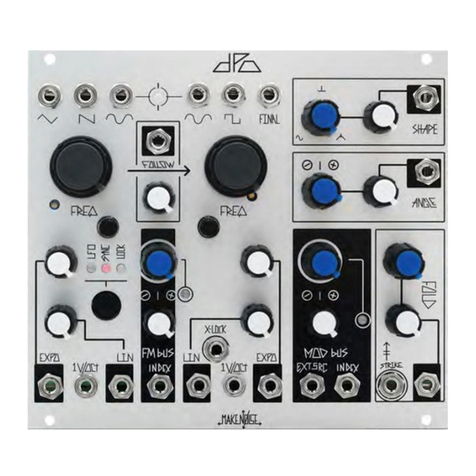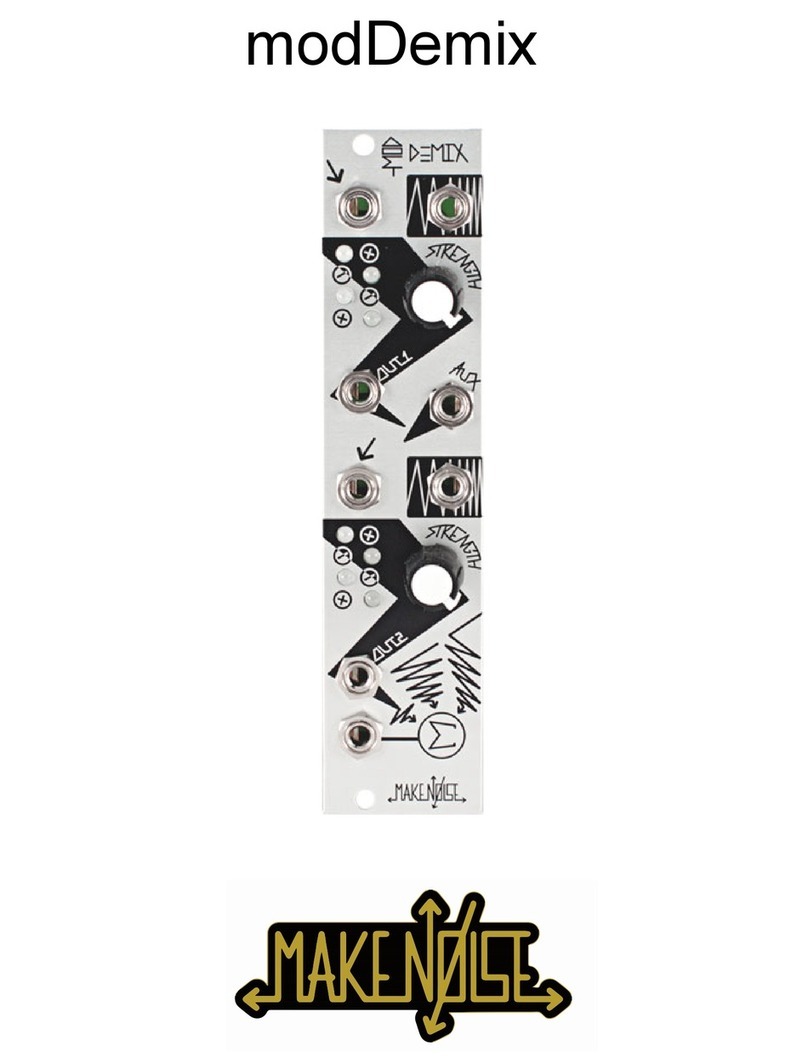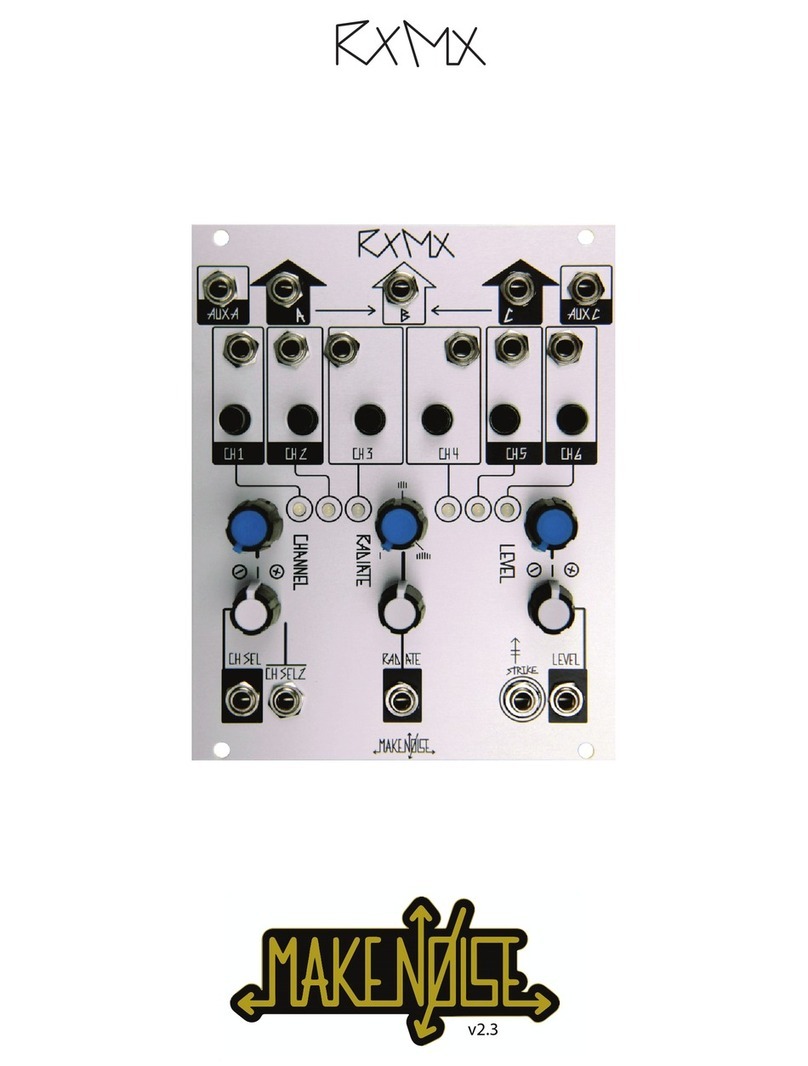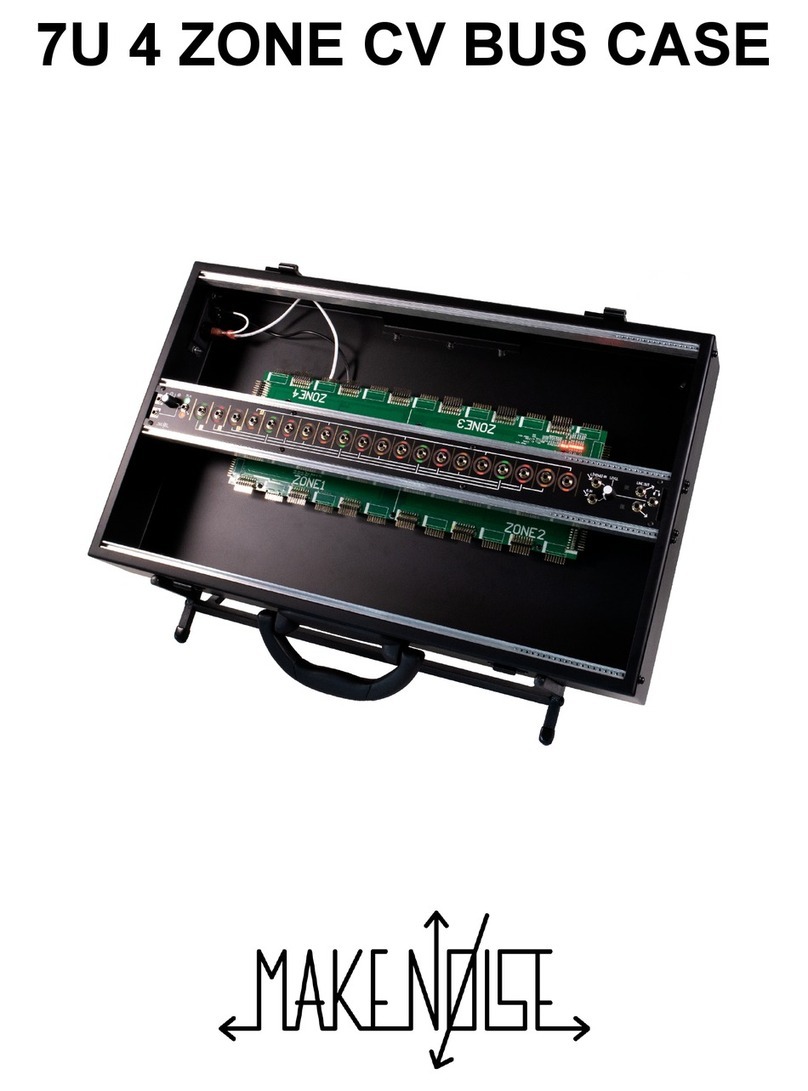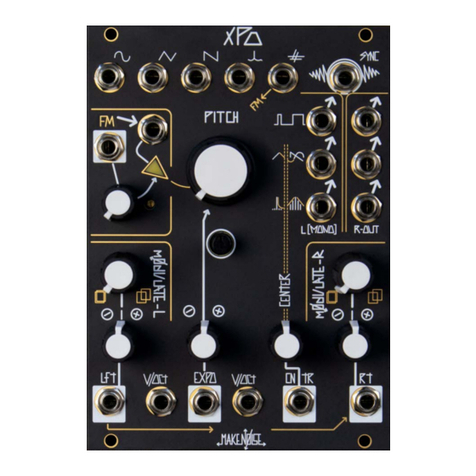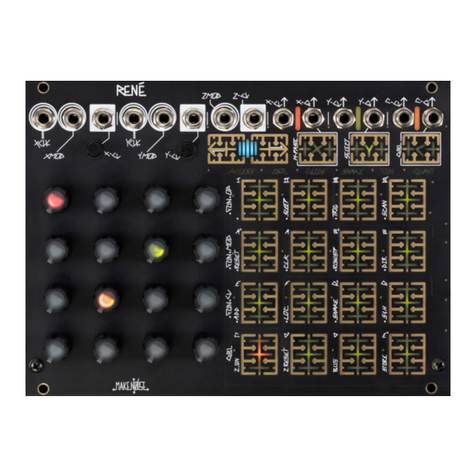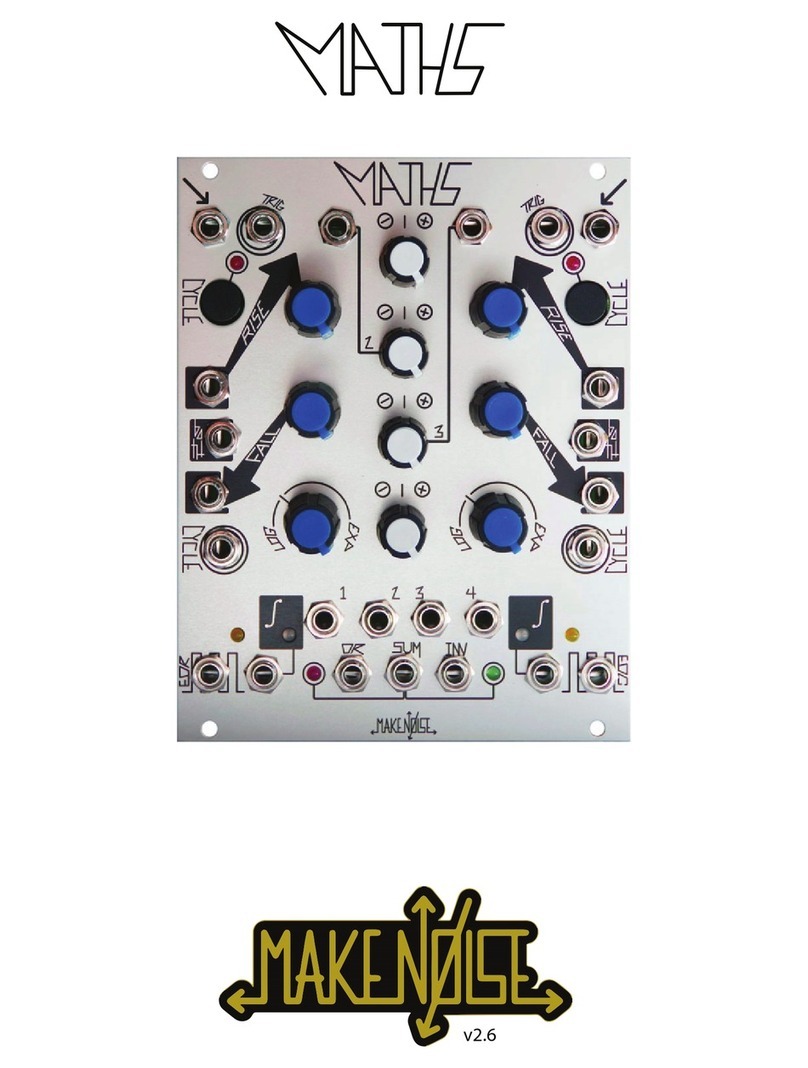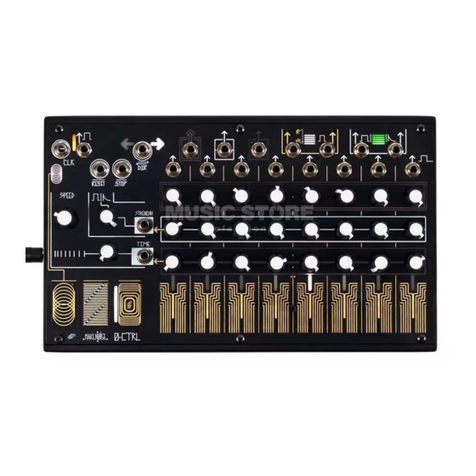
6
OVERVIEW
The PHONOGENE is a digital re-visioning and elaboration of the tape recorder as musical instrument. It takes its name from a
little-known, one of a kind instrument, used by composer Pierre Schaeer. While it is not an emulation, it does share the primitive,
tactile nature of its namesake and expands upon the original concepts. It is informed by the worlds of Musique Concrète (where
speed and direction variation were combined with creative tape splicing to pioneer new sounds) and Microsound (where
computers allow for sound to be divided into pieces smaller then 1/10 of a second, and manipulated like sub-atomic particles).
Having voltage control over every parameter, it is most dynamic as a digital audio buer for the modular synthesist. The
PHONOGENE is comprised of a pair of tool-sets, which work well together. Tape Music Tools allow for sounds to be recorded on
the y, layered using the internal Sound On Sound function, manually cut into pieces using the Splice function, and re-organized
with the Organize control. Once it is spliced up, it is possible to create nearly innite variations of the original loop by modulating
the Organize parameter. Vari-Speed allows for the speed and direction of playback to be controlled continuously with one control
signal. Gene Size, Gene Shift, and Slide make up the Microsound Tools. Gene Size divides the audio buer into progressively
smaller pieces called Genes (aka particles, grains, granules). A clock signal applied to Gene Shift steps through those pieces in
chronological order, while a control signal (such as the Wogglebug Smooth CV) applied to Slide, moves through those pieces in a
nonlinear fashion. Using Slide, random access of the audio buer is possible. Obviously, functions such as Vari-Speed and Organize
are useful for Microsound as well, which is why these functions were grouped into one module. The end result is a sampler/
looper/audio buer that is able to exist within a modular synthesizer system, and oer a vast
amount of real-time sound manipulation in a fast and tactile way.
PERPECTIVE
There is often the expectation that “bad sounds,” such as clicks, pops, distortions, wrong notes, phase inaccuracies and otherwise,
should be impossible with modern musical instruments. Many designers are making instruments which are fool-proof, and which
guarantee some specic musical result, thus making it easy to create the same music over and over again. The PHONOGENE does
not use this approach. In fact, we have made it very possible to make the “bad sounds” and “mistakes” that have led to some of
the greatest moments in musical history (and of course, some of the worst!). With the PHONOGENE, it is possible to Splice sounds
in such a way that you hear sharp contrasts, clicks and pops. This is the physics of sound! It is possible to slow down a
recording to the point of complete decimation, so that all that remains is trail of digital artifacts. Such are the limitations of digital
sound. It is possible to render the source material completely unintelligible, to cut busted loops, to distort digitally, to obscure, to
regenerate to the point of almost no signal integrity. This is the nature of the PHONOGENE. If you seek the perfect looping tool, in
the most contemporary sense of the word“loop,”then please look elsewhere. If you desire to explore the realm of modular, digital
sample manipulation and microsound, read on!
